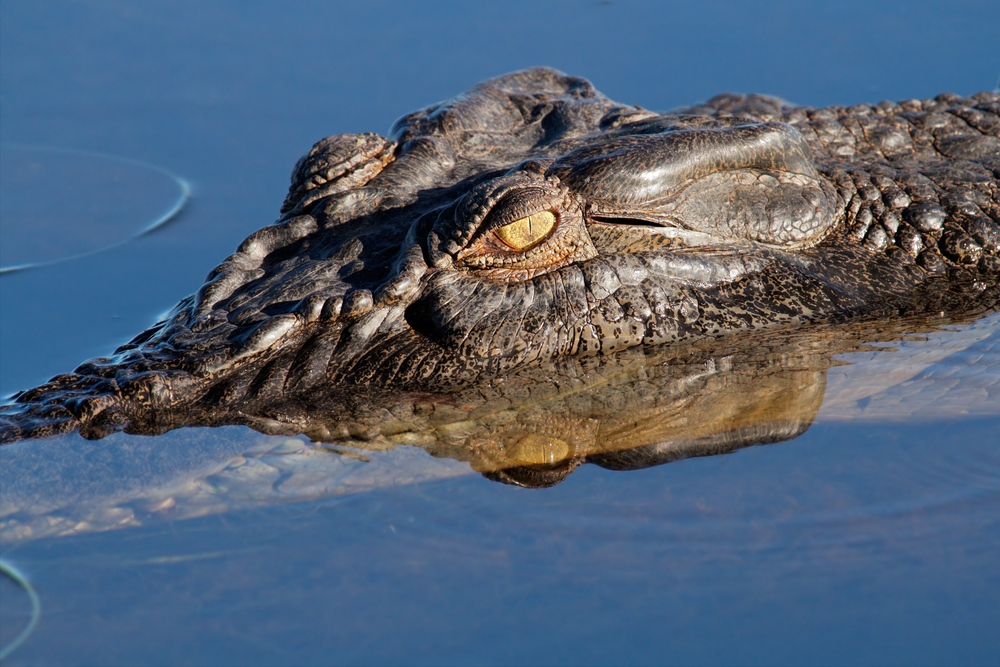
A woman from New Zealand has been killed in a crocodile attack in Tropical North Queensland, Australia, after going for a late night moonlit paddle while celebrating the end of her friend’s cancer treatment.
Witnesses heard 46-year-old photographer Cindy Waldron screaming ‘A croc’s got me, a croc’s got me!’ as she was dragged away by the animal at Thornton Beach in the Daintree National Park, north of Cairns, at about 10.30pm on Sunday. Her friend, 47-year-old Leeann Mitchell, who tried in vain to pull her to safety, is now suffering from extreme shock.
The two women had been walking arm-in-arm in knee-deep water along the beach—which is lined with signs warning of the danger of crocodiles—when Ms Mitchell felt something brush against her leg. Seconds later the terrifying attack took place. A massive air and land search for the missing woman’s remains has so far yielding nothing, but a five-metre saltwater crocodile has been spotted in the area, according to local media reports.
The incident, which is the eighth known fatal crocodile attack in Queensland in 21 years, has prompted the first comprehensive government survey on the local crocodile population since hunting the animals was outlawed in the state in 1974.
A spokeswoman for the Queensland Department of Environment and Heritage Protection explained to Guardian Australia that it was ‘planning detailed population surveys of crocodile numbers in consultation with recognised crocodile experts [in order to] provide scientifically sound information about crocodile populations to guide future management of crocodiles throughout their range in Queensland.’
The avoidable tragedy, as it was described by Warren Entsch, federal government MP for the area, has also sparked a predictable debate about the coexistence of humans and an apex predator such as the saltwater crocodile in Australia’s Top End.
Mr Entsch pointed out that the attack happened in a national park, near a creek where tourism operators run croc-spotting tours, in an area where there are numerous warnings about the dangers. ‘You can only get there by ferry, and there are signs there saying watch out for the bloody crocodiles,’ he said. ‘People have to have some level of responsibility for their own actions.’
‘You can’t legislate against human stupidity,’ continued Mr Entsch. ‘If you go in swimming at 10 o’clock at night, you’re going to get consumed.’

However, Bob Katter, an MP in a neighbouring electorate and a long-term advocate for the resumption of controversial crocodile hunting safaris, has branded Entsch ‘stupid’ for ‘defending crocodiles instead of people’, and said the reptiles’ numbers had ‘exploded’ since the hunting ban had been enforced.
In Western Australia and the Northern Territory, recent surveys indicate the saltwater crocodile population has significantly bounced back since hunting bans were introduced in the early 1970s. Prior to receiving protection, the species had been pushed to the brink right across the Top End, by trophy hunters targeting their valuable hides.
Salties, also known as estuarine crocodiles, are the largest reptile in the world in terms of mass, reaching 1000kg in weight and up to 7 metres in length (unconfirmed reports have claimed crocodiles of up to 10 metres, but animals over 5 metres are rare). They are extremely territorial, predatory and dangerous, and can be present in rivers, swamps, billabongs, estuaries and the sea.
Problem animals are commonly trapped and removed to crocodile farms, a practice which has reduced the number of conflicts between locals and reptiles, and visitors to Australia’s tropical north are constantly warned to take the threat of salties seriously—yet there are still one or two fatal crocodile attacks every year.
